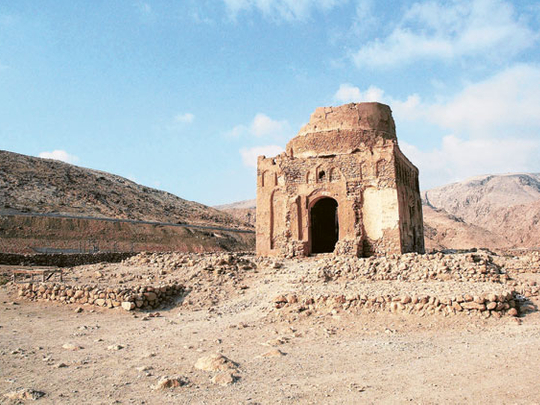
Muscat: A joint Omani-French expedition has discovered the Friday Mosque, built by Bibi Maryam in Qalhat around 1300 AD, according to Biubwa Ali Al Sabri, Director of Excavation and Archaeological Sites at the Ministry of Heritage and Culture.
At a media briefiing she said that the mosque was destroyed by the Portuguese in 1508. The ministry is planning an archaeological park and a museum at the site. "The findings of the on-going excavations would be displayed for visitors, tourists and students of history and culture," Biubwa said.
Biubwa also said that Qalhat is the only ancient city which still maintained due to natural protection from mountain and sea. "Human development still has very little impact on the city and the French team involved in the excavation has found many interesting facts, figures and artefacts from the site."
Dr Axelle Rougeulle, an expert on history of the Indian Ocean trade and harbours during the Islamic period, said that the site was currently a ruined field, about 35 hectares wide, surrounded by fortification walls. "This is all that is left of a large medieval harbour city which was the main port in Oman from the 13th to 15th century," said the head of the expedition from the National Centre for Scientific Studies, Paris.
Early village
Qalhat is believed to be founded around 1100. "In the beginning it was probably a large village on the sea shore," pointed out Dr Rougeulle.
According to the famous geographer Ibn Al Majawir, who visited Qalhat in 1230, the fortifications were built in 1218. Around 1250, the harbour started growing considerably, especially under the reign of the governor Ayaz and his wife Bibi Maryam in 1285-1310.
"It was known as the ‘Twin City of Hormouz', which became at that time the leader in the Indian Ocean trade," the French expert said.
According to Ibn Battuta, who visited Qalhat in 1330, Bibi Maryam built the beautiful Friday Mosque, richly decorated with Kashan (glazed tiles from Iran).
In the 15th century AD, the port started to be superseded by Musqat (now Muscat) and the city was damaged by earthquakes. "The Portuguese, in 1508, burnt the Friday Mosque to the ground, and then completely abandoned it."
"Qalhat is, therefore, a major site in the history and heritage of Oman and the Ministry of Heritage and Culture decided in 2007 to launch an important project of study and development at the site," Dr Rougeulle said.












